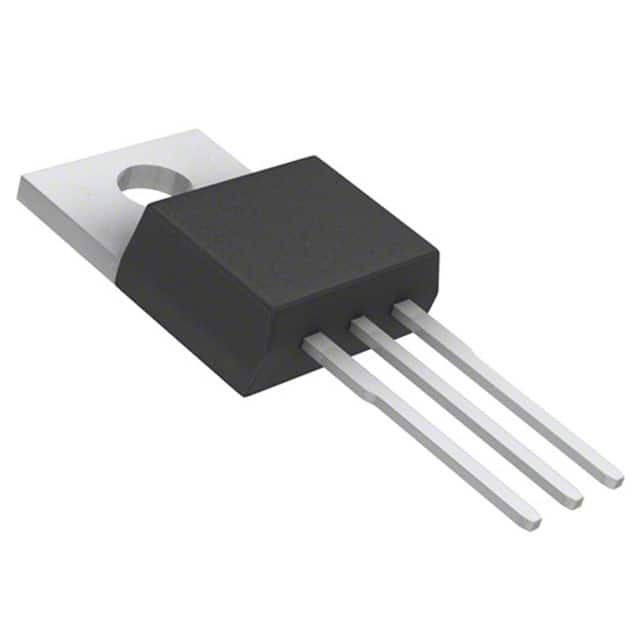Xem thông số kỹ thuật để biết chi tiết sản phẩm.

FQP70N10 - Semiconductor Device Encyclopedia Entry
Introduction
The FQP70N10 is a power MOSFET (Metal-Oxide-Semiconductor Field-Effect Transistor) belonging to the category of semiconductor devices. This entry provides an overview of the FQP70N10, including its basic information, specifications, pin configuration, functional features, advantages and disadvantages, working principles, application field plans, and alternative models.
Basic Information Overview
- Category: Power MOSFET
- Use: The FQP70N10 is commonly used in power supply applications, motor control, and other high-power switching circuits.
- Characteristics: It is known for its high current-carrying capability, low on-state resistance, and fast switching speed.
- Package: The FQP70N10 is typically available in a TO-220 package, which allows for easy mounting and heat dissipation.
- Essence: Its essence lies in providing efficient and reliable power switching capabilities in various electronic circuits.
- Packaging/Quantity: It is usually sold individually or in reels containing multiple units.
Specifications
- Voltage Rating: 100V
- Current Rating: 70A
- On-State Resistance (RDS(on)): 0.022Ω
- Gate Threshold Voltage (VGS(th)): 2-4V
- Operating Temperature Range: -55°C to 175°C
- Package Type: TO-220
Detailed Pin Configuration
The FQP70N10 typically has three pins: 1. Gate (G): Controls the conductivity between the source and drain terminals. 2. Drain (D): Connects to the load or power supply. 3. Source (S): Connected to the ground or common reference point.
Functional Features
- High current-carrying capability
- Low on-state resistance for minimal power loss
- Fast switching speed for efficient operation
- Enhanced thermal performance due to the TO-220 package
Advantages and Disadvantages
Advantages
- Efficient power handling
- Low power dissipation
- Fast switching characteristics
- Robust and reliable performance
Disadvantages
- Higher cost compared to some alternative models
- May require additional heat sinking in high-power applications
Working Principles
The FQP70N10 operates based on the principle of controlling the flow of current between the drain and source terminals using the voltage applied to the gate terminal. When a sufficient voltage is applied to the gate, the device enters a low-resistance state, allowing current to flow through it. This enables efficient power switching and control in various electronic circuits.
Detailed Application Field Plans
The FQP70N10 finds extensive use in the following applications: - Power supply units - Motor control systems - High-power switching circuits - Inverters and converters - Audio amplifiers
Detailed and Complete Alternative Models
Some alternative models to the FQP70N10 include: - IRF540N - STP80NF03L - IRLB8748 - FDP8878
In conclusion, the FQP70N10 power MOSFET offers high-performance power switching capabilities, making it suitable for a wide range of applications in the electronics industry.
Word Count: 443
Liệt kê 10 câu hỏi và câu trả lời thường gặp liên quan đến ứng dụng FQP70N10 trong giải pháp kỹ thuật
What is the maximum drain-source voltage of FQP70N10?
- The maximum drain-source voltage of FQP70N10 is 100V.
What is the continuous drain current rating of FQP70N10?
- The continuous drain current rating of FQP70N10 is 70A.
What is the on-resistance (RDS(on)) of FQP70N10?
- The on-resistance (RDS(on)) of FQP70N10 is typically 0.022 ohms at VGS = 10V.
Can FQP70N10 be used in high-power applications?
- Yes, FQP70N10 is suitable for high-power applications due to its high current and voltage ratings.
What type of package does FQP70N10 come in?
- FQP70N10 is available in a TO-220 package.
Is FQP70N10 suitable for switching applications?
- Yes, FQP70N10 is well-suited for switching applications due to its low on-resistance and high current capability.
What is the gate-source threshold voltage of FQP70N10?
- The gate-source threshold voltage of FQP70N10 is typically 2.5V.
Does FQP70N10 require a heat sink for thermal management?
- Depending on the application and power dissipation, a heat sink may be required for optimal thermal management when using FQP70N10.
What are the typical applications for FQP70N10?
- Typical applications for FQP70N10 include motor control, power supplies, DC-DC converters, and automotive systems.
Is FQP70N10 suitable for use in harsh environments?
- FQP70N10 has a rugged design and can be used in moderately harsh environments, but specific environmental conditions should be considered for each application.

